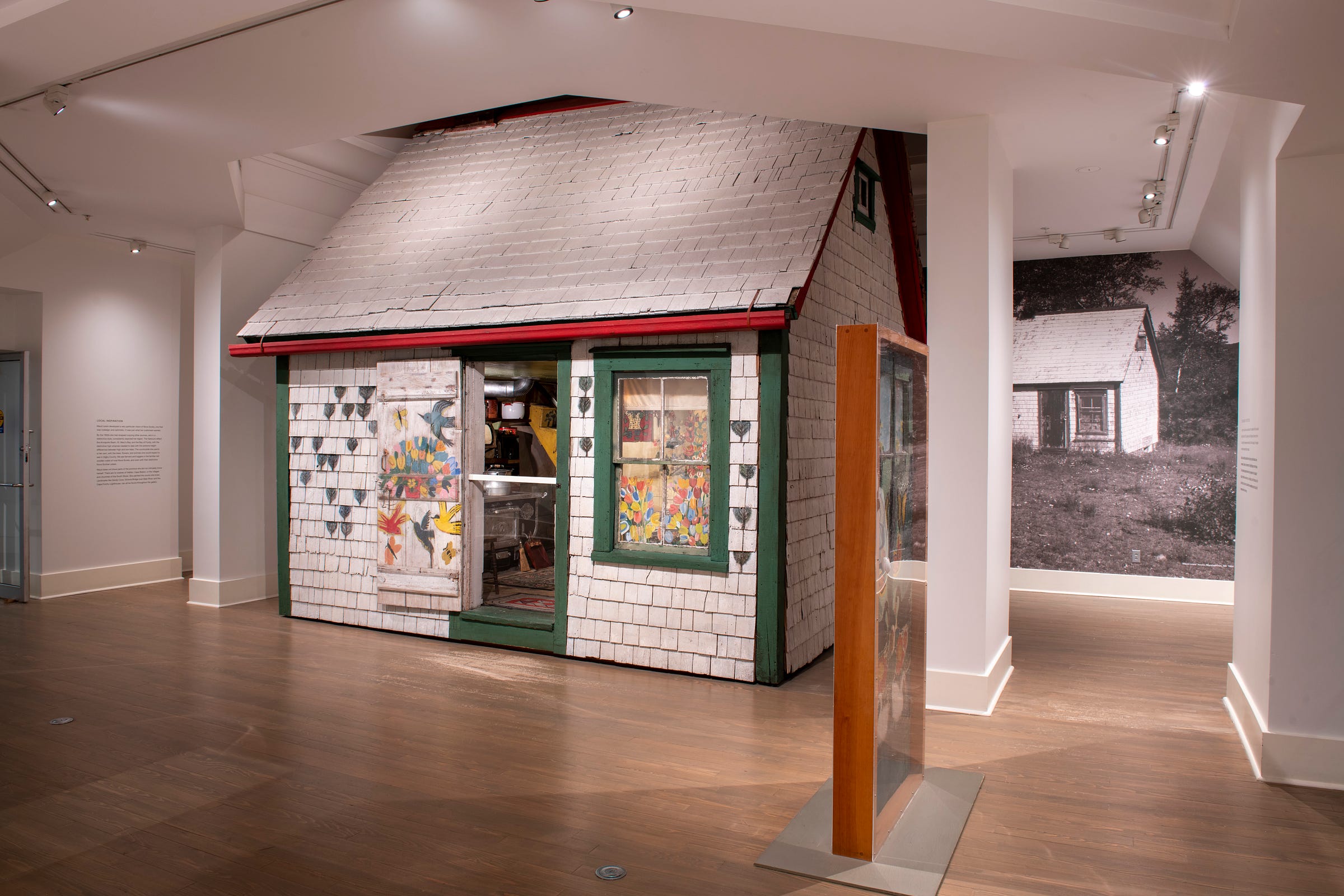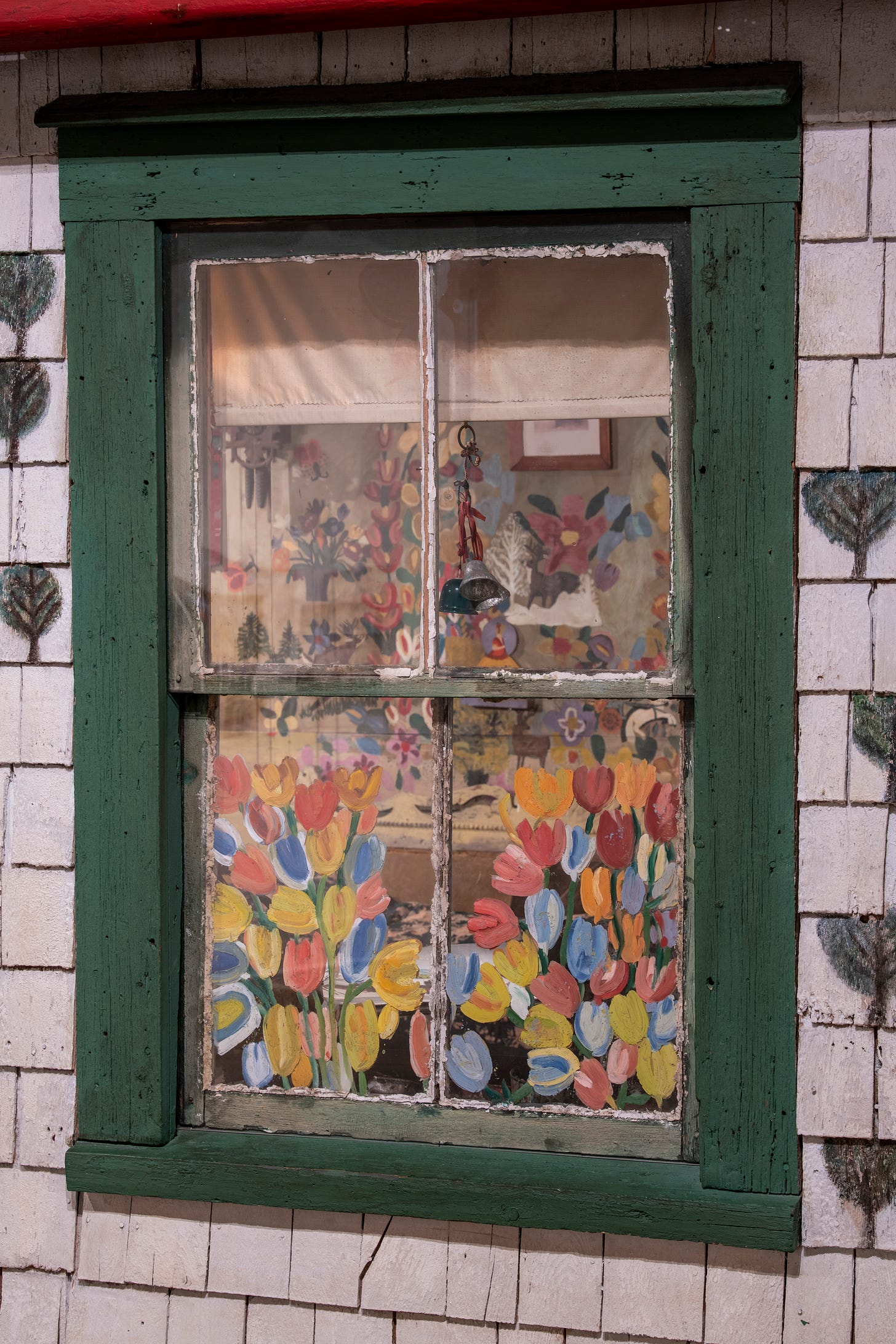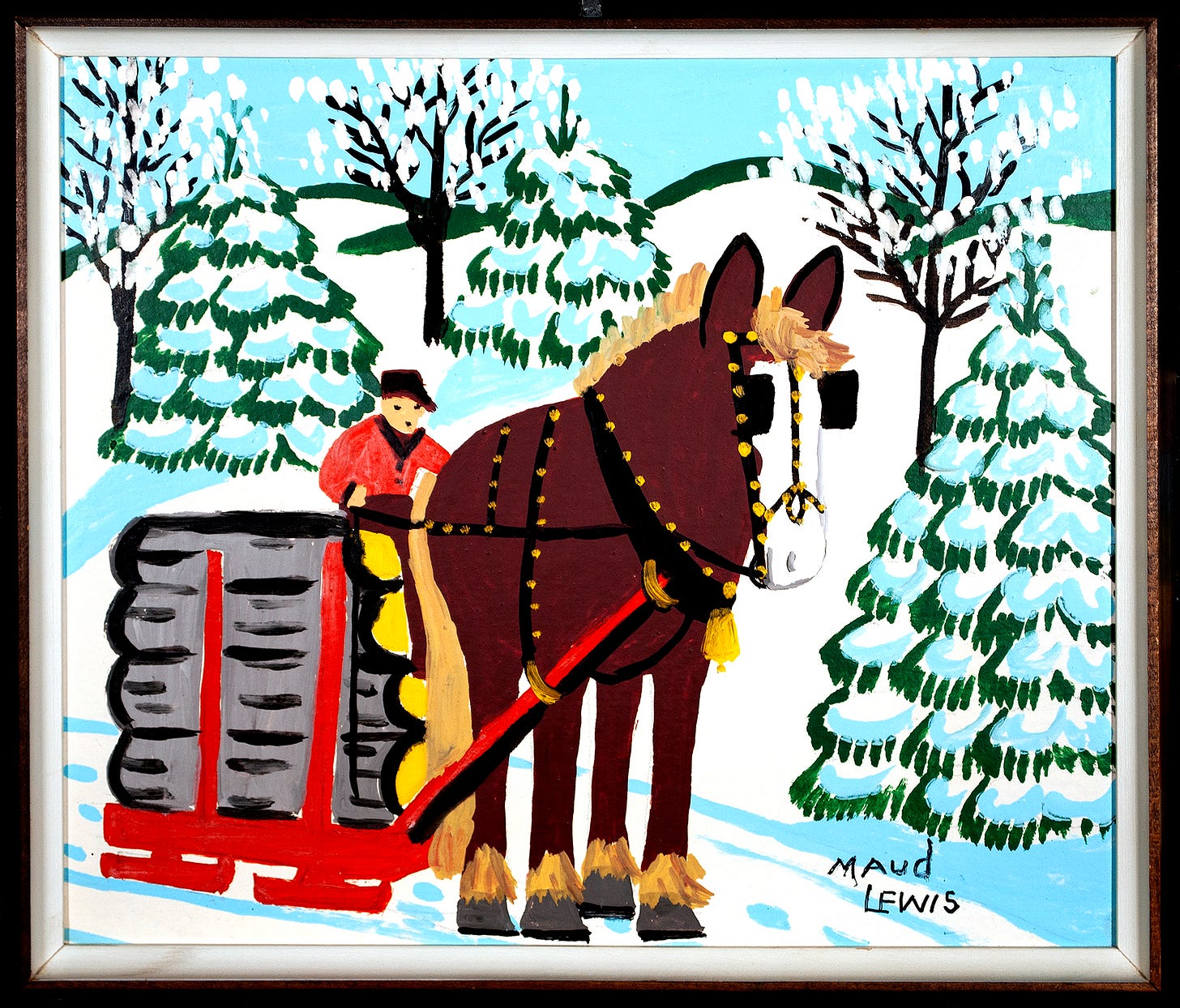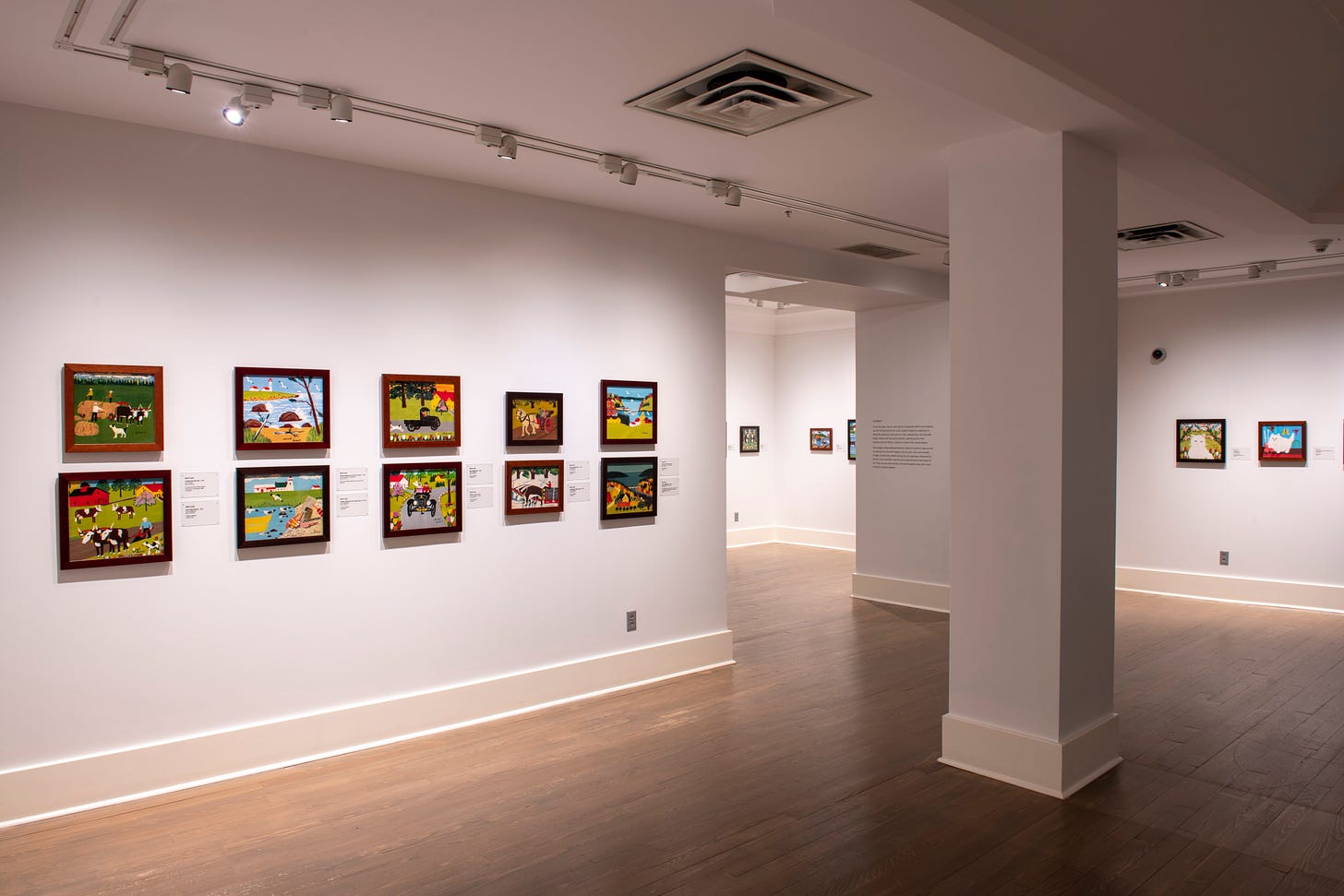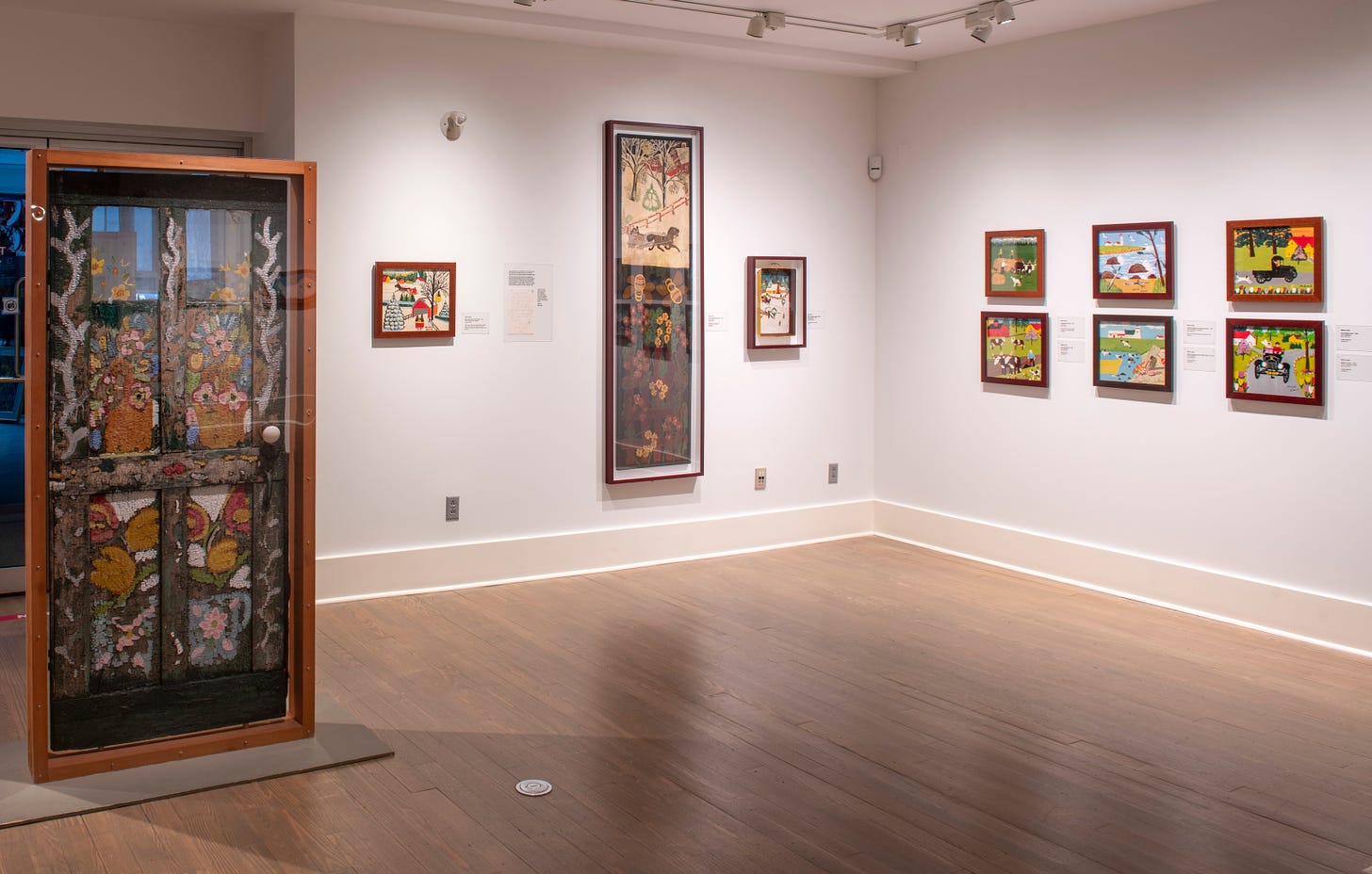Sp6 — Maud Lewis Gallery
HALIFAX | How the Art Gallery of Nova Scotia turned a folk artist’s house into an on-site gallery
WORDS BY LAUREN VELVICK
PHOTOGRAPHY COURTESY OF AGNS
As a beloved folk artist, Maud Lewis’s story is both charming and enigmatic in the same way that her art, though deceptively simple, can prompt the sort of deep and complex engagement often reserved for more overtly ‘challenging’ works. Lewis’s paintings are immediately inviting, cute even, with their fields of flat bright colour and expressive animals. These aesthetic choices, partly influenced by the artist’s arthritis, often hold a profundity that’s easy to dismiss.
Lewis lived most of her adult life in poverty, and, since her death in 1970, her work has accrued value; this despite having originally sold hand-painted cards for 5 cents and oil paintings on board for 5 dollars. The small, ramshackle house that she decorated and shared with her husband, fish peddler Everett Lewis, has been restored by the Art Gallery of Nova Scotia (AGNS) since its acquisition in 1994. After Everett’s death in 1979 left the house empty, a community conservation effort, ‘The Maud Lewis Painted House Society’, eventually led to the relocation of the house to the Art Gallery of Nova Scotia for a permanent display.
As interest in Lewis has increased, with a critically lauded biopic starring Sally Hawkins and Ethan Hawke released in 2017, along with numerous books over the years, the Art Gallery of Nova Scotia has expanded their display of Lewis’s work with an additional exhibition until April 2023. Lewis’s biography and posthumous popularity is typical of the ‘Outsider Artist’ trajectory: from poverty (whether cheerful or miserable), to being rescued from obscurity and eventually recognised for a unique talent and vision, often honed through disabling health issues.
The curatorial impulse towards the preservation of an artist’s creative environment isn’t necessarily folksy at all; consider the painstaking reassembling of painter Francis Bacon’s studio at Hugh Lane Gallery in Dublin. The narrative of Maud Lewis as an artist and the situated understanding of her work will develop and shift, just as the way art history deals with such figures has shifted greatly since 1994, even if the wider art market continues as it always has. In conversation with Cannopy Magazine, Sarah Moore Fillmore, Interim Director & CEO of AGNS, cites Lewis’s idiosyncratic and somewhat counterintuitive approach to selling her work, whereby the roadside house was adorned with a “Paintings for Sale” sign. When she first sold cards alongside her husband’s fish peddling, they were priced the same as the artwork she sold as a child. For Lewis, perhaps this was a way to initiate a direct and unmediated engagement with her audience, which is diametrically opposed to the impulse and ethics driving the global art market. This raises interesting questions around how an artist like Lewis should be positioned within the community that, to an extent, supported and sustained her art. Then, also, how does she fit into the art museum as an institution, and in the wider history of Western art? If nothing else, Lewis’s approach inadvertently highlights and joyously disrupts habitually reinforced ideas.
CAN | How does this gallery capture the personality behind Maud Lewis’s art?
SMF ── I suspect the feeling that the exhibition celebrates the artist’s life equally with her artwork is partly because the art she produced is so relatable. It’s deceptively simple in appearance and the bright colours and subject matter are comforting, minimising the divide between the visitor, artwork, and artist.
In the recent refresh of the Scotiabank Maud Lewis Gallery, we wanted to establish the contextual foundation of Maud’s life, specifically as it related to her art career. This allowed us to look more closely at how her commercial practice evolved, her known inspirations, the intuitive structural composition in her paintings, and her specific style and technique, adding depth to our understanding of Maud’s distinctive body of work. Aspects of her life are directly responsible for some of these elements, such as severe arthritis that limited her movement and directly affected her painting technique, but that context is needed to fully understand how her art changed over three decades.
An artist’s life – their health, relationships, economic situation, geographical location, period they lived – all provide context for and often informs their art. Maud’s artwork is the only first-person account we have of her life and holds hints of her personality. The work is whimsical, quirky, even funny. It’s also spare and economical in its use of material. We invite our visitors to draw their own conclusions about which of Maud Lewis’s personality traits might emerge.
CAN | Her house is the centrepiece of the gallery. What was the "installation" process that transformed and transported this residence into a public space for shared experience?
SMF ── The conservation and subsequent installation of the house into the gallery space happened in 1998, before both curators of the recently refreshed Scotiabank Maud Lewis Gallery exhibition began working at the Art Gallery of Nova Scotia. That said, a house in an art museum is unusual and this particular house is unique. Maud Lewis’s House has always served multiple functions. During the artist’s lifetime it was residence, art studio, advertisement, and an evolving artwork itself. It, along with her “Paintings for Sale” sign, are what made this house stand out and encouraged people to stop, explore, and discover her paintings. It was located on a public road, where it could be found by anyone. While it continues to be in a public space, it’s one with more restricted access and certainly a different experience to visitors now.
The death of the artist and then her husband eliminated the social and commercial aspects of the house, and, even before it moved to its current location, it transformed from residence to potential monument to Maud. The restoration and installation of the house into the Gallery means that it is now celebrated primarily as a retired art studio and Maud’s largest artwork, while the mess of everyday life has been sanitised from the house. Where once visitors stepped into the house to select a painting and socialise with Everett and Maud, they now peer in and see the painted and collaged walls, the painted bread boxes, stairs, and other embellishments that would have been concealed behind the detritus of living.
It’s a tiny home that adds to the folklore that surrounds Maud Lewis. People are charmed by its fairy tale scale. What we want to add to that narrative is a note of reality- the close quarters, poverty, isolation that were also present in the living/working space. This object, once a tight, smoke-filled one-room, one-loft home at the roadside, is a key piece in the puzzle of this artist’s oeuvre. As such an object it holds great significance as the artist’s largest artwork and wields an undeniable power that people are drawn to.






